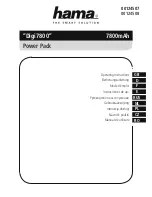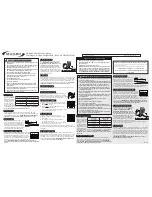
UPS2000-A-(6 kVA-10 kVA)-RTL
User Manual
1 Safety Information
Issue 07 (2020-01-10)
Copyright © Huawei Technologies Co., Ltd.
11
Any operation on any electrical device in an environment that has inflammable air can cause
extreme danger. Strictly obey the operating environmental requirements specified in related
user manuals when using or storing the device.
The UPS can be configured with a backfeed protection dry contact to work with an external
automatic circuit breaker, preventing the voltage from flowing back to input terminals over
static bypass circuits. If the installation and maintenance personnel do not need backfeed
protection, paste labels on external mains and bypass input switches, informing that the UPS
is connected to a backfeed protection card. Disconnect the backfeed protection card from the
UPS before operating the UPS.
Do not use the UPS in the following places:
Environments that are close to flammable or explosive materials, dust, corrosive gases or
dust, conductive or magnetic dust, abnormal vibration, or collision
Rooms or outdoor environments where temperature and humidity are not controlled
(with high temperature, low temperature, moisture, direct sunlight, or heat sources)
Non-confined environments near the ocean (0–3.7 km) and indoor or semi-indoor
environments where the temperature and humidity are not controllable, such as simple
equipment rooms, civil houses, garages, corridors, and direct ventilation cabinets near
the sea; or houses with only roofs, railway station platforms, gymnasiums, and
aquariums
Environments that are conducive for the growth of microorganisms such as fungus or
mildew
Environments where rodents (such as mice) and insects exist
1.7 Battery Safety
Basic Requirements
Before operating batteries, carefully read the safety precautions for battery handling and
master the correct battery connection methods.
Do not expose batteries at high temperatures or around heat-generating devices, such as
sunlight, fire sources, transformers, and heaters. Excessive heat exposure may cause the
batteries to explode.
Do not burn batteries. Otherwise, the batteries may explode.
To avoid leakage, overheating, fire, or explosions, do not disassemble, alter, or damage
batteries, for example, insert sundries into batteries or immerse batteries in water or other
liquids.
Wear goggles, rubber gloves, and protective clothing to prevent skin contact with
electrolyte in the case of electrolyte overflow. If a battery leaks, protect the skin or eyes
from the leaking liquid. If the skin or eyes come in contact with the leaking liquid, wash
it immediately with clean water and go to the hospital for medical treatment.
Use dedicated insulated tools.
Move batteries in the required direction. Do not place a battery upside down or tilt it.
















































